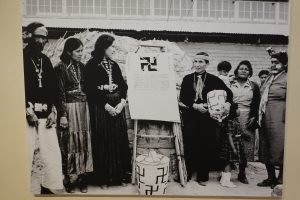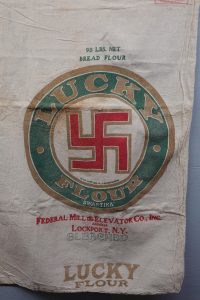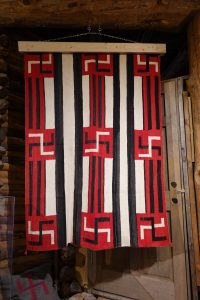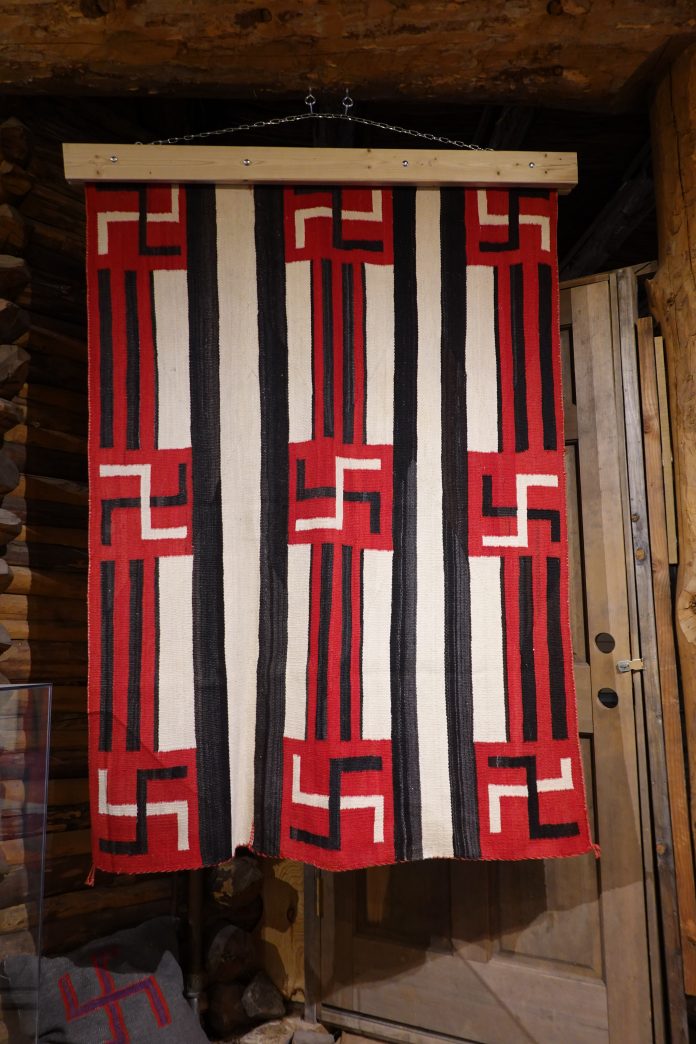The symbol now universally recognized as the Nazi swastika was in fact a very ancient symbol used in cultures worldwide from America to Europe to China.
The Museum of Indigenous People in Prescott currently has an exhibit on the use of this symbol, which Native people often thought of as whirling logs. Contemporary Hopi believe it represents migrating clans; the intersection of the lines are the centre of the universe. The symbol even was worn as a patch on the left shoulders of U.S. soldiers in the 45th Infantry Division: a yellow swastika on a square background of red symbolized the Spanish heritage of the four states that comprised membership of the 45th (Oklahoma, New Mexico, Colorado and Arizona). After 15 years, when a black swastika set at a 45 degree angle was adopted by the Nazis, the infantry division switched to a thunderbird symbol. The word swastika derives from the ancient Sanskrit language.

There is a poignant photograph on display from 1940 showing a black swastika that has been crossed out. It sits atop a declaration by the Apache, Tohono O’odham, Hopi and Navajo renouncing their use of the symbol in the future. “Because the above ornament which has been a symbol of friendship among our forefathers for many centuries has been desecrated recently by another nation of peoples,” the declaration read, the Native peoples resolved to avoid using it “on our blankets, baskets, art objects, sandpaintings and clothing.”
 Several such blankets are on display, along with everyday objects from mainstream culture, such as a can of pure grain alcohol, Swastika brand, by The Peoria Corporation of Illinois; and a sack of Lucky Flour, sporting a red swastika, by the Federal Mill & Elevator Co of Lockport, New York. Even Coca Cola used the swastika to advertise its drink.
Several such blankets are on display, along with everyday objects from mainstream culture, such as a can of pure grain alcohol, Swastika brand, by The Peoria Corporation of Illinois; and a sack of Lucky Flour, sporting a red swastika, by the Federal Mill & Elevator Co of Lockport, New York. Even Coca Cola used the swastika to advertise its drink.
A small but important exhibit, it runs through December 2021, and should be viewed by any visitor to Prescott, the first capitol of the Territory of Arizona. The museum’s permanent collection, from ancient artifacts to modern paintings, is quite extensive and well worth close study.
When I visited, the museum hosted expert jeweller Roy Tenorio, who had a large table filled with his creations in various stones set in sterling silver. I highly recommend anyone interested in fine or custom-made Native American jewellry to contact him. He can be reached at suntrebor56@yahoo.com
Visit their website: museumofindigenouspeople.org














